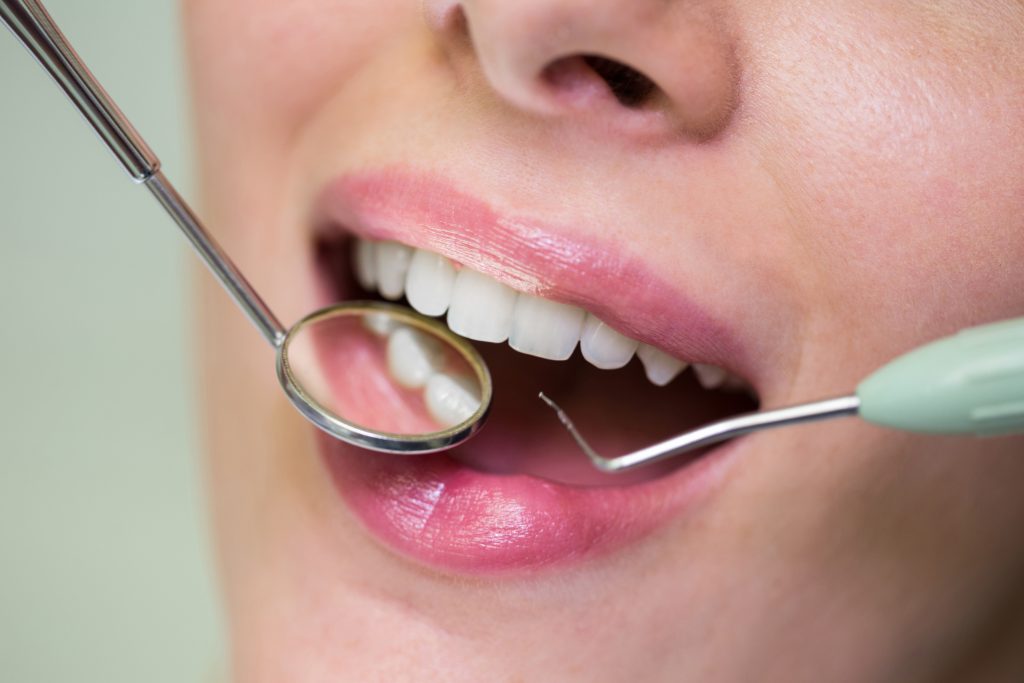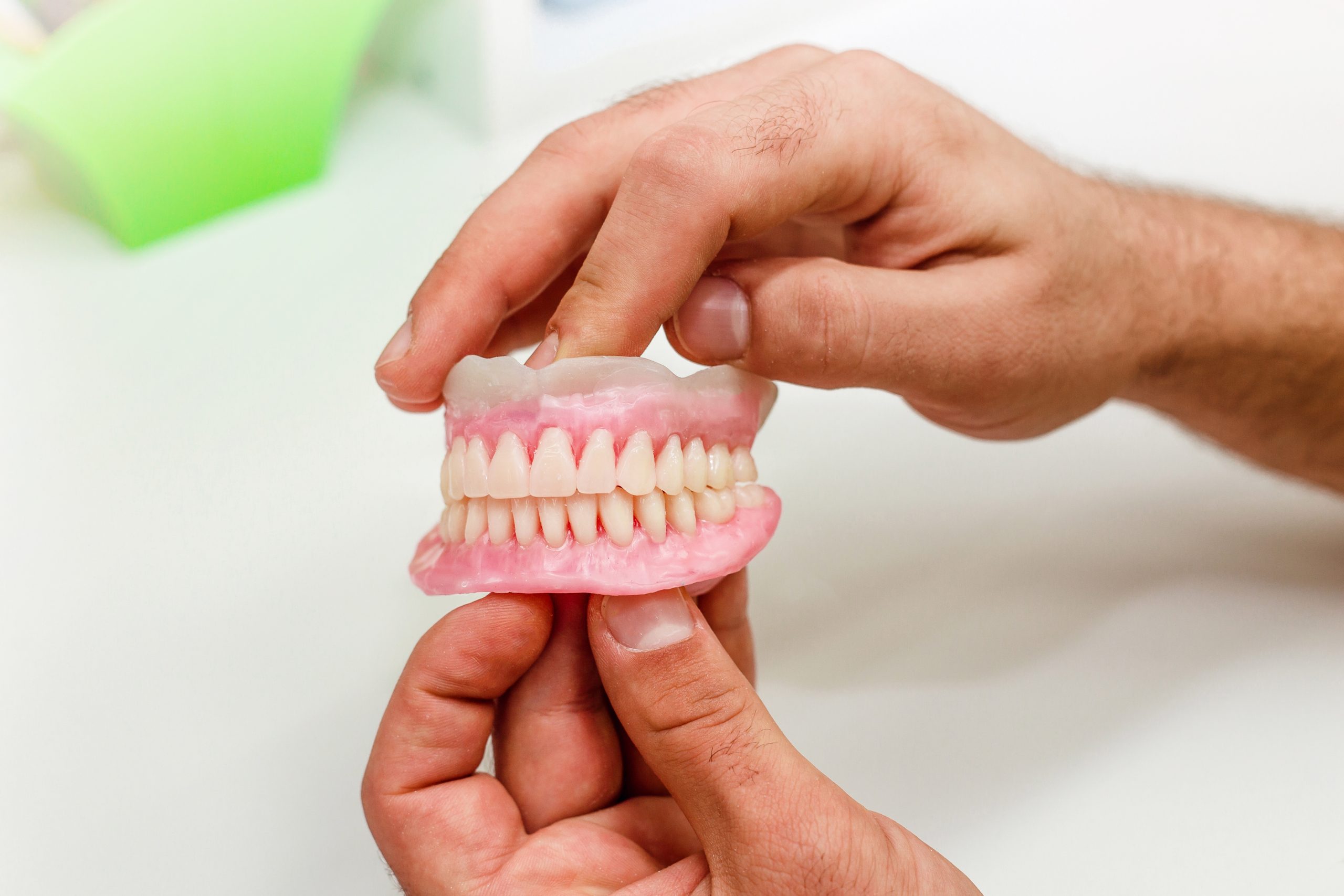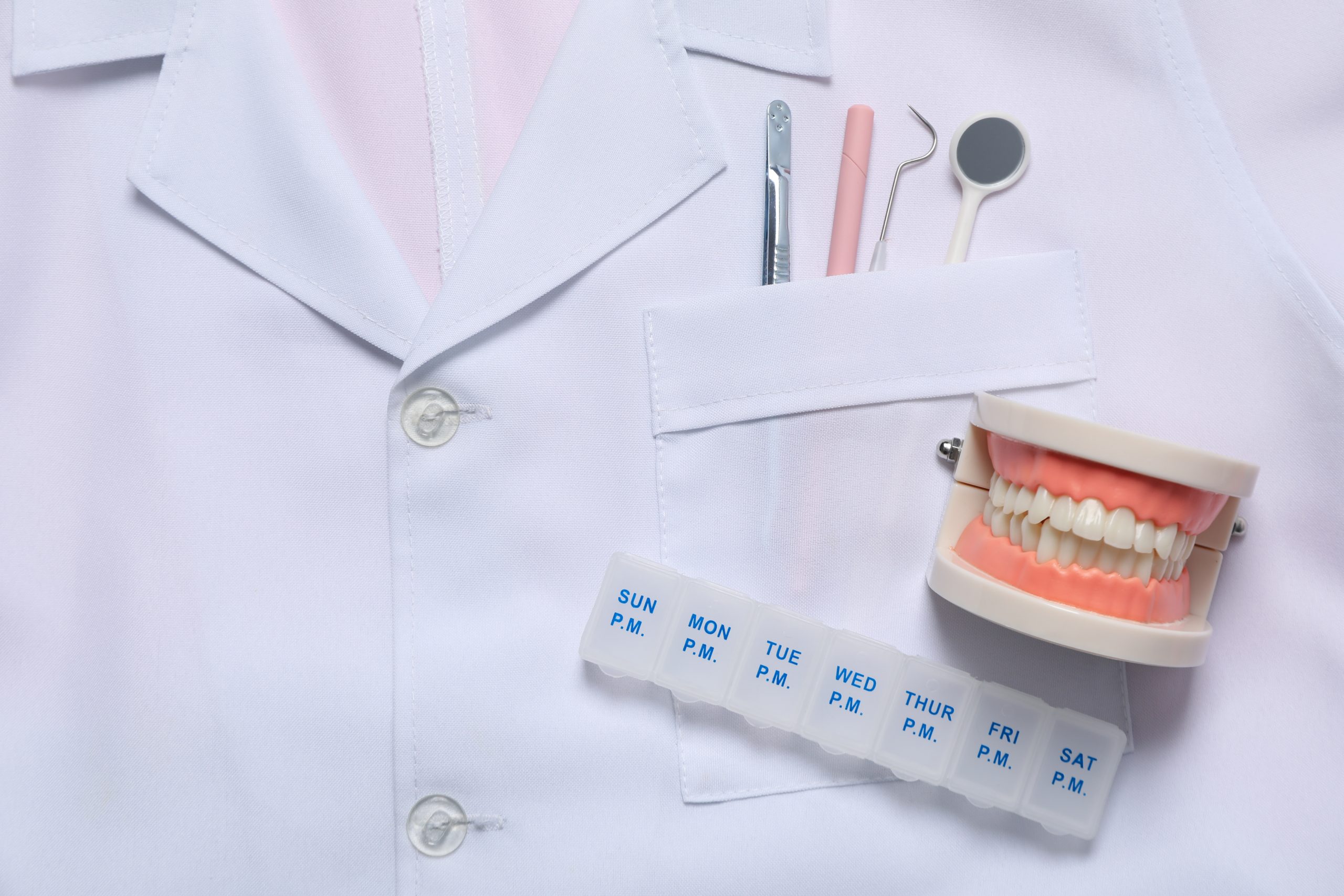Many patients feel unsure or nervous about getting dental crowns, especially if it’s their first time. It’s completely valid to ask questions and want to understand risks. At our dental clinic, we believe informed patients feel more confident in their care. This guide was created to help you feel supported with reliable information to guide your dental care decisions.
You may be wondering, “Can dental crowns cause problems?” Dentists commonly recommend dental crowns to protect damaged teeth, but like any procedure, they may occasionally involve complications. Understanding possible side effects—such as temporary sensitivity or bite issues—can help you prepare and respond effectively.
Knowing what’s normal versus concerning helps you take timely action if needed. In the sections that follow, we’ll cover common concerns and provide practical tips for managing them.
Summary of the Content:
- Dental crowns are a common treatment used to restore the shape, strength, and function of weak teeth.
- Some patients experience mild sensitivity to temperature or pressure shortly after their crown is placed.
- Bite discomfort or changes in chewing may indicate that the crown requires adjustment. Prompt review by your dentist can restore comfort and prevent complications.
- Crowns can last over ten years with good oral hygiene and regular dental check-ups. Longevity depends on the materials used, dental habits, and follow-up care.
- Poor fit, crown damage, or gum changes can cause discomfort or affect the function of your teeth. Early signs, such as pain or loose crowns, require professional evaluation.
- Avoiding harmful habits helps protect the crown. Nightguards may reduce stress on crowns caused by teeth grinding.
- Professional guidance supports proper management if symptoms arise. Routine dental check-ups help detect issues early and promote the long-term success of your dental crown.
Understanding the Dental Crown Procedure and Potential Complications
After getting a dental crown, it’s helpful to know what to expect in the short term and the long run. While the dental procedure is common, individual healing experiences can vary, and being aware of possible sensations can help ease anxiety. By understanding short-term reactions and how to maintain your crown, you can better manage your oral health. This section provides guidance on post-procedure experiences and how to care for your crown for lasting results.
Common Immediate Concerns
After receiving a dental crown, it’s normal to experience some short-term changes as your mouth adjusts. Many patients report common concerns in the first few days to weeks after receiving a dental crown. Below, we explain these concerns and outline what you can expect during the recovery process:
- Mild Sensitivity to Hot and Cold:
It’s common to feel temporary sensitivity to temperature changes after crown placement, especially when consuming hot or cold foods. This usually subsides within one to two weeks as the tooth and surrounding tissues adjust. - Tenderness from Local Anaesthesia Wearing Off:
Once the local anaesthetic wears off, you may notice some soreness or mild throbbing in the affected area. This sensation should gradually improve within one to two days without intervention. - Gum Irritation Around the Crown Margins:
The gum tissue surrounding your new crown may feel slightly inflamed or tender. The gum irritation results from minor trauma that occurs during the crown procedure. It often improves within a week with gentle brushing and saltwater rinses. - The Feeling of a “High” Bite:
Some patients notice that the crown feels slightly high or different when they bite. This is a common post-placement sensation and often improves as your bite adjusts. However, if it persists beyond a few days, a simple adjustment by your dentist can address the issue. - Discomfort When Chewing:
Mild pressure is felt when biting or chewing during the first few days. To minimise tooth sensitivity, consider using the opposite side of your mouth when chewing. If discomfort increases or lasts beyond a week, it’s important to seek a dental review. - What’s Normal vs. What Needs Attention:
Normal healing includes mild soreness, temporary sensitivity, and gum irritation that improves gradually over time. Contact your dentist promptly if you experience increasing pain, swelling, or prolonged sensitivity lasting more than two weeks. A loose-fitting crown may also require a professional assessment to check for proper fit and help prevent further complications.
Recovery times vary between individuals. Following your dentist’s advice and reporting concerns promptly helps promote a smoother, more comfortable healing process.
Potential Long-term Considerations
Dental crowns can offer many years of functional and aesthetic benefits, but they do require long-term care and monitoring. Here are the key factors patients should consider for maintaining crown health and longevity:
- Average Crown Lifespan:
Studies show that over 90% of dental crowns remain successful for five years when properly maintained. Crown longevity beyond 10 years varies between 50 and 80%, influenced by material type, oral hygiene, and individual habits. - Ongoing Maintenance is Essential:
Regular brushing, flossing, and routine dental visits help preserve the health of both the crown and the supporting tooth structure. Neglecting hygiene can lead to decay at the crown margins or gum disease, which may compromise the restoration. - Lifestyle Habits Influence Longevity:
Patients who grind their teeth, chew ice, or use their teeth to open packaging place their crowns under additional stress. Dentists may recommend protective measures, such as nightguards, to reduce the risk of wear and damage. - Recognising Signs of Complications:
Persistent discomfort or sensitivity lasting more than two weeks may suggest an issue with your crown or the underlying tooth. A change in your bite may also indicate crown loosening, tooth decay, or irritation requiring professional assessment. These signs require prompt evaluation by your dentist. - The Importance of Regular Check-ups:
Routine dental reviews enable the early detection of wear, damage, or underlying tooth issues. Addressing these issues promptly can help extend the life of your crown and prevent more invasive treatment in the future.
Maintaining dental crowns requires a shared responsibility between the patient and the provider, involving consistent care and regular dental appointments. Recognising changes early and attending check-ups helps manage issues promptly, preserving the crown’s long-term function and appearance.
Common Issues Associated with Dental Crowns
While dental crowns are a reliable treatment option, patients may still wonder, “Can dental crowns cause problems?” While dental crowns are generally successful, some patients may experience occasional issues over time.
Understanding these common issues helps patients respond promptly and protect their oral health. Early identification of warning signs can prevent minor concerns from becoming more complex dental problems. This section outlines key factors that may affect the long-term comfort, function, and appearance of dental crowns.
Managing Dental Crown Pain and Sensitivity
It’s normal to feel some discomfort after a crown is placed, especially during the initial healing period. Here are the signs that help distinguish typical sensitivity from issues needing professional dental attention.
- Mild Temperature Sensitivity Is Normal:
It’s common to experience mild sensitivity to hot or cold beverages for a few days following crown placement. This typically subsides within one to two weeks as the tooth adjusts. - Sharp Pain May Indicate a Bite Issue:
Persistent sharp pain when biting down may suggest the crown is too high or interfering with the bite. This requires prompt adjustment by a dental professional. - Lingering or Increasing Pain Requires Evaluation:
If discomfort persists for longer than a week, it may indicate a problem, such as nerve irritation beneath the crown. Worsening pain over time could suggest underlying decay and should be assessed promptly by a dental professional. Seeking prompt evaluation helps prevent more serious complications. - Desensitising Treatments and Bite Adjustments Help:
Dentists may use desensitising agents, fluoride applications, or minor crown adjustments to relieve normal post-operative sensitivity and improve comfort. - Professional Assessment Ensures Proper Management:
If pain persists after self-care, your dentist will conduct a thorough examination to determine the cause. They may use X-rays to decide if further treatment, such as root canal therapy, is appropriate.
Understanding what is typical helps patients identify when something may need professional dental attention. This awareness encourages proactive oral health care.
Crown Fit and Bite Issues
The fit and bite of a dental crown directly influence comfort, function, and long-term success. A precisely fitted crown stabilises adjacent teeth and helps distribute chewing forces evenly. When a crown is too high, it can cause bite misalignment and discomfort in the jaw or opposing teeth. Dentists utilise advanced technology, including digital scans, to help achieve an accurate crown fit.
Modern crowns benefit from tools like CAD/CAM systems, which improve fabrication precision and reduce the need for major adjustments. After dental crown placement, dentists may perform minor bite adjustments to support comfort and maintain natural jaw movement. These routine adjustments are painless and help prevent future complications such as tooth wear or jaw pain. Follow-up appointments enable dentists to evaluate the crown’s function and make refinements that promote ongoing comfort and stability.
Aesthetic Concerns
While dental crowns are designed to mimic natural teeth, aesthetic outcomes can vary. Open communication with your dentist during the planning process helps align expectations. Here are some common aesthetic considerations patients may experience with dental crowns:
- Colour Mismatch May Occur:
The crown may appear slightly different from nearby teeth due to variations in material choice or natural tooth colour differences. Lighting conditions can also affect how the crown blends with surrounding teeth in different environments. Shade-matching techniques during fabrication help minimise these differences. - Shape or Contour Irregularities Can Be Refined:
If a crown appears bulky or uneven, dentists can often reshape the material during a follow-up visit. In some cases, they may recommend replacing the crown to improve fit and appearance. - Gum Recession Can Expose Crown Margins:
Over time, minor gum recession may expose the edge of the crown, affecting its appearance and integrity. Maintaining good gum health can delay this process. - Realistic Expectations Enhance Satisfaction:
Cosmetic results depend on several factors, including the natural tooth structure and the type of crown material. While outcomes are often aesthetic, they may not be identical to natural tooth enamel. - Replacement is an Option When Aesthetics Decline:
If significant aesthetic concerns arise, replacing the crown is a viable option. Your dentist can assess whether a revision is advisable based on clinical and cosmetic factors.
With thoughtful planning and professional input, most patients achieve outcomes that feel natural and meet their cosmetic goals.
Understanding Potential Allergic Reactions and Material Considerations
Allergic reactions to dental crown materials are rare; however, patients should still be aware of the risks. Here are ways dentists identify and manage these risks during the treatment planning process:
- Allergic reactions to dental crowns are rare, affecting fewer than 1% of patients.
- Patients may experience allergic responses such as gum inflammation, oral discomfort, or unusual tissue reactions near the crown site. The following are less common symptoms: facial swelling, widespread rash, or persistent irritation that does not improve over time.
- These are made from various materials, including porcelain crowns, metal alloys, and zirconia, each with distinct biocompatibility profiles.
- Zirconia is considered highly biocompatible and is often recommended for patients with known sensitivities due to its low allergenic potential.
- Metal crowns may contain nickel or other metals that can trigger hypersensitivity in susceptible individuals.
- Identification of potential allergies involves assessing the history of sensitivities, particularly to metal-based dental restorations, like metallic crowns.
- In some cases, patch testing may be advised before crown placement to confirm specific material sensitivities.
- Patients should always inform their dentist about known allergies, even if they seem unrelated to dental treatments. The following are reasons why this matters: it helps guide safer material choices and reduces the risk of adverse reactions.
- For patients with confirmed sensitivities, dentists can recommend hypoallergenic crown materials such as high-purity ceramics or specific metal-free alternatives.
Patients and clinicians can work together to achieve safe, individualised care by understanding dental crown material options. The following are key considerations when recognising early signs of allergy and selecting the most suitable crown material.
Crown Placement Considerations and Proper Healing
Dentists rely on clinical precision and patient cooperation to support the success of crown placement and recovery. The following are key factors that influence treatment outcomes:
- Dentists begin by carefully preparing the tooth, which involves reshaping it to create a stable foundation for the crown.
- They take precise impressions of the reshaped tooth, which guide the creation of a well-fitting, custom-made crown.
- While the final crown is being fabricated, the dentist places a temporary crown to protect the tooth and maintain function.
- Patients may experience mild sensitivity or discomfort for 24-72 hours after receiving a dental crown. This sensation usually subsides as the surrounding gum tissue adjusts to the newly placed crown.
- Most healing happens within one to two weeks as the gums gradually adapt around the newly placed crown. During this time, the dentist may adjust the bite to enhance comfort and help the crown function properly.
- Dentists advise patients to avoid hard or sticky foods during healing to reduce pressure on the newly placed crown. This precaution helps stabilise the crown and lowers the risk of it shifting or becoming dislodged.
- Clear post-placement instructions—like how to clean around the crown and when to return for reviews—help patients recover smoothly.
- Attending follow-up appointments allows the dental team to monitor healing, address any bite discrepancies, and evaluate crown stability.
- Many patients ask about the procedure time. Dentists complete crown placement over two visits, typically scheduled one to two weeks apart.
- Local anaesthesia helps keep patients comfortable during the procedure, and any soreness responds well to over-the-counter pain relief.
Skilled crown placement helps reduce complications and supports long-term success when paired with a good oral hygiene routine. Patients who follow care instructions and attend reviews often experience better comfort, function, and durability from their crowns.
Caring for Your Crowned Tooth: Maintenance and Prevention
Caring for a crowned tooth involves daily oral hygiene and mindful habits to protect the restoration from damage or decay. Regular dental visits help monitor the crown’s condition and support long-term oral health by detecting potential issues early. Below are essential ways to care for your crowned tooth effectively.
Brush Thoroughly and Gently Around the Crown: Brush your teeth twice daily using a soft-bristled toothbrush and fluoride toothpaste for effective cleaning and cavity protection. Focus gently on the gumline where the crown meets your natural tooth to help prevent plaque buildup and gum inflammation.
- Floss Carefully with the Right Tools:
Use interdental brushes or floss threaders to gently clean around crown margins and remove food particles and plaque. This helps reduce the risk of gum inflammation and prevents decay from developing beneath the crown. - Rinse with Alcohol-Free Mouthwash:
Opt for alcohol-free mouth rinses to reduce the bacterial load without irritating sensitive tissue around the crown. - Avoid Chewing on Hard Substances:
Refrain from chewing on hard items, such as ice or hard candies, as these can cause crowns to crack. - Don’t Use Your Teeth as Tools:
Avoid using your teeth to open packaging, as this applies unnecessary pressure to your dental work. Excessive force may weaken the bond between your crown and tooth, increasing the risk of damage. - Limit Sticky or Chewy Foods:
Minimise sticky or very chewy foods that can pull at crown edges, especially in the first few weeks after placement. - Attend Regular Professional Cleanings:
Visit your dentist every six months for professional cleanings, which help control plaque and tartar around the crown. - Get Routine Crown Check-ups:
Routine check-ups allow early identification of issues like micro-leakage or bite changes that may lead to dental crown failure. - Monitor Crown Health with Radiographs:
Your dentist may take periodic radiographs to check the underlying tooth structure and surrounding gum health. - Address Teeth Grinding (Bruxism):
Teeth grinding (bruxism) places excessive force on crowns, increasing the risk of chipping, loosening, or long-term failure. - Protect Your Crown with a Custom Nightguard:
Wearing a custom-made nightguard helps protect your crown from damage caused by grinding during sleep. It also protects your natural teeth from excessive pressure that may lead to wear, chipping, or sensitivity over time. - Get a Professional Bite Assessment:
Discuss your bite with your dentist to identify if you need a nightguard for teeth grinding. Your dentist can then recommend the most suitable type based on your specific grinding patterns and oral health needs.
Follow these practical steps and stay proactive with dental care to maintain the health of your crowned tooth. This approach promotes long-term comfort and enables the crown to function effectively over time.
Recognising and Addressing Dental Crown Problems Early
Recognising the early signs of dental crown issues helps patients take timely action and avoid more serious complications. Here are specific warning signs to watch for, along with guidance on when to contact your dentist:
- Lingering Sensitivity:
Mild sensitivity to hot or cold temperatures is common after a crown is placed. However, if it persists beyond two weeks or worsens, it may indicate underlying issues, like bite misalignment or nerve irritation. Book a dental appointment if the discomfort persists. - Severe or Worsening Pain:
Intense, throbbing, or escalating pain is not typical and may indicate infection, dental decay beneath the crown, or nerve involvement. Seek immediate dental attention if the pain interferes with your daily activities or sleep. - Loose or Moving Crown:
A crown that shifts, feels unstable, or comes off could mean the bonding material has failed. Contact your dentist promptly to prevent further damage or exposure of the underlying tooth. - Visible Cracks or Chips:
Any visible damage to the crown, including hairline cracks or chips, can compromise its strength and function. Even small fractures should be assessed, as they may worsen over time. - Persistent Bad Taste or Odour:
You might notice a lingering bad taste or smell around your crown if food debris becomes trapped beneath it. This could suggest bacterial buildup from decay or leakage, and it’s important to have your dentist assess it promptly. Arrange a dental check-up to investigate the source. - Gum Inflammation Around the Crown:
Swelling, redness, or bleeding around the crown that persists for more than a few days may indicate gum irritation. If these symptoms persist or worsen, book a dental appointment to check for possible infection or other underlying issues.
Acting early when crown-related symptoms arise supports long-term dental health and reduces the risk of complications. Prompt dental care may prevent minor crown issues from progressing into more complex or costly treatments later.
When to Seek Professional Advice
If you experience persistent discomfort, pain, or bite issues after having a crown placed, consult your dentist without delay. Each patient’s mouth and oral history are unique, so only a dental professional can provide accurate, personalised guidance. Your dentist will assess the crown, surrounding gums, and underlying tooth structure to determine the cause of symptoms. Timely diagnosis helps prevent minor concerns from developing into more complex dental problems that may require extensive treatment.
Regular dental check-ups play a key role in maintaining the longevity and health of your crown and surrounding teeth. During follow-up appointments, your dentist will examine the crown for signs of wear, decay, or misalignment. They may also take X-rays or use imaging tools to monitor areas not visible during a standard exam. Always inform your dental team about new discomfort, sensitivity, or changes so they can intervene early and appropriately.
Final Thoughts
Dental crowns are a widely used treatment that helps restore function, strength, and appearance to damaged or weakened teeth. While many patients wonder, “Can dental crowns cause problems?” most issues arise from a poor fit or underlying oral conditions. With proper placement, regular check-ups, and good oral care, complications are uncommon and usually manageable. Understanding both the benefits and risks helps patients feel confident and prepared to make decisions about their dental care.
At Ashburton Dental Centre, we prioritise open and ongoing communication to tailor each treatment to your unique needs. Our team provides evidence-based care, educational support, and tailored guidance throughout every step of your dental journey. If you have questions about dental crowns or potential concerns, we encourage you to reach out. Contact us via phone, email, or online to arrange a personalised consultation with our experienced dental team.




